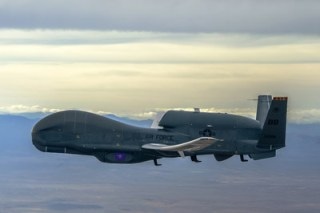Apr 13 2017
 Credit: UTC Aerospace Systems
Credit: UTC Aerospace Systems
UTC Aerospace Systems, a unit of United Technologies Corp., has successfully executed the first flight test of its new MS-177 long-range, multi-spectral imaging (MSI) sensor on the Northrop Grumman RQ-4B Global Hawk Unmanned Aircraft System (UAS). With this successful completion of the flight test, the U.S. military will soon be able to view airborne images with greater clarity and at a greater distance for the very first time. The test was conducted on February 8 at Northrop Grumman's Palmdale, California, facility.
Following the completion of the Global Hawk flight, MS-177 will now start a six-month integration, testing and qualification phase before official fielding in late 2017. This flight test is considered to be the first step forward in the MS-177 Family of Systems (FoS) roadmap that comprises of customer unique mission capable variants, hyperspectral imaging and multi-spectral imaging.
As the most advanced imaging sensor of its kind, the MS-177 is a game-changer in airborne surveillance. During its first flight on Global Hawk, MS-177 demonstrated its ability to take the aircraft's imaging capabilities to a new level in terms of coverage area, quality and accuracy. The success of the first MS-177 flight test is a testament to the strong collaboration on this effort between UTC Aerospace Systems, Northrop Grumman and the U.S. Air Force. It embodies our commitment to helping our customers produce aircraft that are more intelligent, more electric and more integrated.
Kevin Raftery, vice president of ISR and Space Systems at UTC Aerospace Systems
In service, the MS-177 FoS sensor will provide improved image resolution over a range that is much longer and also provide greater coverage area per hour than any other Intelligence, Surveillance and Reconnaissance (ISR) sensor in the U.S. military inventory. The MS-177 FoS sensor is also capable of working from multiple ISR platforms, meeting various military requirements for both maritime and land missions.
In 2016, the U.S. Air Force contacted UTC Aerospace Systems to support the integration, testing and fielding of the baseline MS-177 sensor variant on Global Hawk. Successful flight demonstrations have already been completed by MS-177 on the E-8C JSTARS aircraft in 2010 and from a High Altitude Long Endurance (HALE) UAS in 2016. The MS-177A sensor system, considered to the next variant, will be fielded on Global Hawk in late 2019.
The MS-177 is considered to be the next evolution of UTC Aerospace Systems' Senior Year Electro-optical Reconnaissance System (SYERS) sensor, presently flown on U-2S aircraft. The MS-177 squints forward and backward, allowing new imaging capabilities, whereas the SYERS-2 sensor only pivots from side to side. Ultimately, the MS-177 sensor will be converted into the MS-177A and provide expanded spectral performance, enabling in the collation of actionable and enhanced intelligence and improving data identification capabilities.